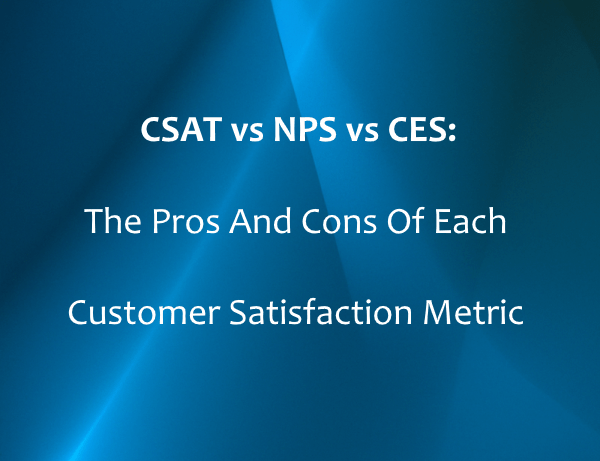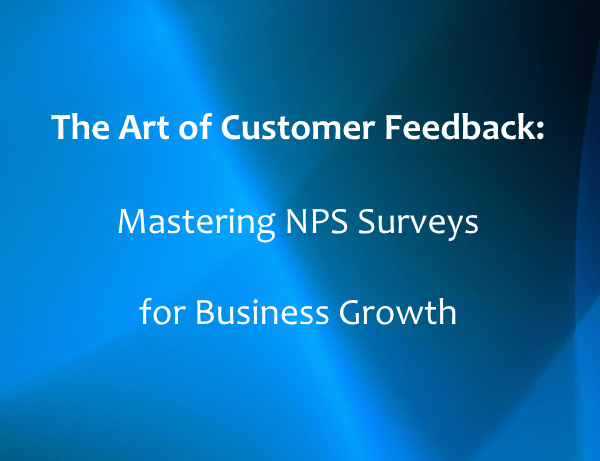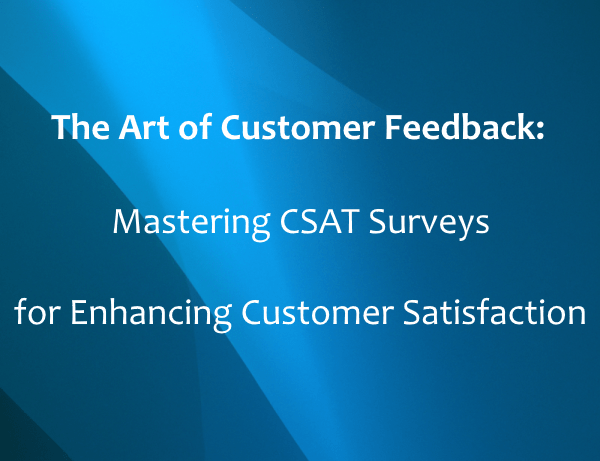The Art of Customer Feedback: Mastering CES surveys for Improving Customer Experience
In the ever-evolving realm of customer satisfaction, businesses constantly seek effective ways to gauge customer experiences and identify areas for improvement. One metric that has gained significant traction is the Customer Effort Score (CES). This comprehensive guide delves into the intricacies of CES and explores the top CES surveys used by leading organizations. Join us as we embark on a journey to uncover the true essence of CES and its profound impact on optimizing customer interactions. Let's dive in!
Understanding Customer Effort Score
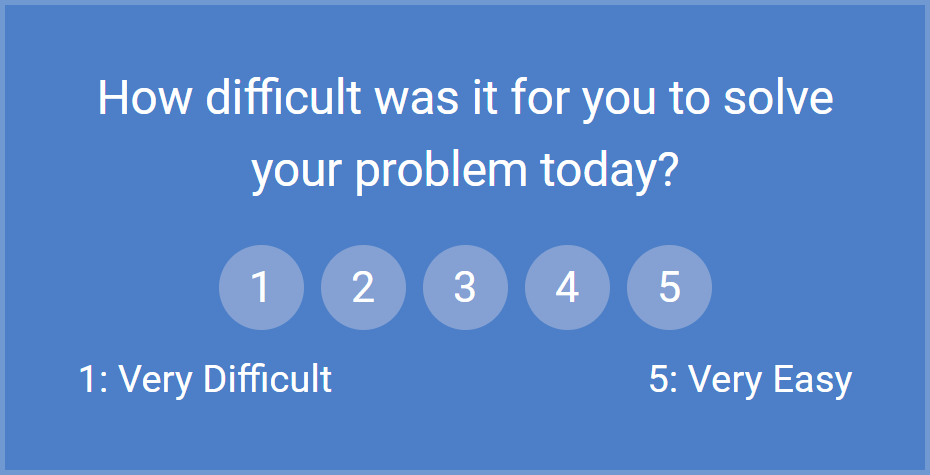
Defining Customer Effort Score (CES)
Customer Effort Score (CES) is a metric that measures the ease or difficulty customers encounter when interacting with a company's products, services,
or support systems. Unlike other metrics like
Net Promoter Score (NPS)
or
Customer Satisfaction Score (CSAT), CES specifically focuses on the effort customers put into resolving their issues or achieving their desired outcomes.
How the Customer Effort Score is calculated
The CES question usually uses a scale of 1 to 5 or 1 to 7. CES is calculated by averaging the responses to the CES question. The formula is as follows:
CES score = Sum of CES responses / Number of respondents
For example, if 383 customers respond with a summed score of 1207, the CES would be calculated as:
CES = 1207 / 383 = 3.15
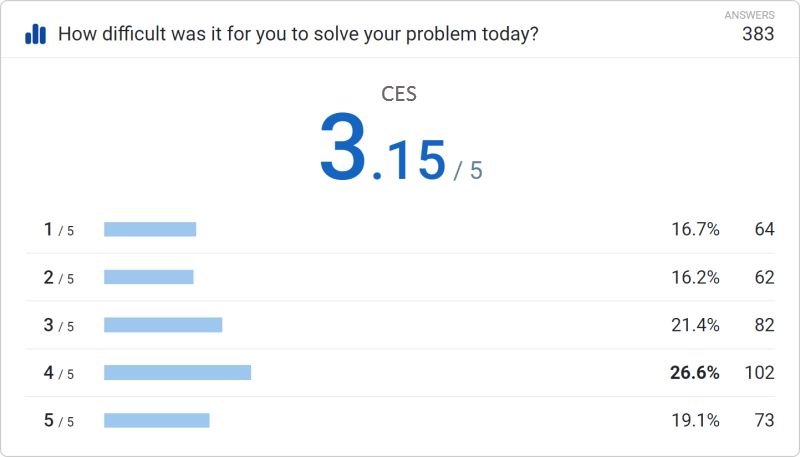
Importance of CES
By analyzing CES, companies can identify pain points in their customer journey and take proactive steps to reduce customer effort.
Assuming CES scores range from "very dissatisfied" to "very satisfied", a low CES indicates that customers are likely to become frustrated, which can lead to churn and negative word-of-mouth.
Conversely, a high CES suggests a seamless experience, resulting in higher customer loyalty and advocacy.
Implementing CES Surveys
Choosing the Right Survey Format
CES surveys can be administered through various channels, including
email,
website surveys,
link surveys,
or even in-person interactions. The choice of survey format depends on the nature of your business and the target audience. It's crucial to select a format that aligns with your customers' preferences to maximize response rates.
Designing Effective CES Surveys
To ensure accurate and actionable insights, CES surveys should be carefully designed. Some key considerations include keeping the survey concise, using clear and simple language, asking specific questions about customer effort, and including open-ended questions for qualitative feedback.
Top CES Surveys
Transactional CES Surveys
Transactional CES surveys are conducted immediately after a specific customer interaction, such as a purchase interaction. These surveys capture the customer's experience in real-time, allowing companies to address any issues promptly. Here are two popular transactional CES surveys:
- Single-Item CES Survey: This survey employs a single question to gauge the customer's effort on a scale, typically ranging from "very difficult" to "very easy." For example, "How easy was it for you to complete your purchase today?" Respondents select their level of effort, and the data is aggregated to calculate the CES.
- Likert Scale CES Survey: Likert scale surveys use a range of statements or descriptors to measure customer effort. Participants rate their agreement or disagreement with each statement, and the scores are averaged to derive the CES. An example statement could be, "The company made it easy for me to resolve my issue."
Relationship CES Surveys
Relationship CES surveys aim to assess the overall experience of customers over an extended period. These surveys help organizations understand the cumulative effect of multiple touchpoints and interactions. Here are two commonly used relationship CES surveys:
- Periodic CES Survey: Periodic CES surveys are conducted at regular intervals, such as quarterly or annually. These surveys capture the overall customer effort experienced across various touchpoints during that period. The questions focus on the entire customer journey rather than a specific interaction.
- Post-Service CES Survey: Post-service CES surveys are sent after the completion of a customer service interaction, such as a support ticket or call. These surveys measure the effort required by customers to resolve their issues and assess the effectiveness of the support team.
Analyzing and Acting on CES Data
Quantitative Analysis
Once CES survey data is collected, companies need to analyze the results to gain insights. Quantitative analysis involves calculating the average CES, identifying trends or patterns across different customer segments, and comparing CES scores over time. This analysis helps identify areas where customers face the most effort, allowing businesses to prioritize improvements.
Qualitative Analysis
In addition to quantitative data, qualitative analysis plays a vital role in understanding the context behind the CES scores. Open-ended survey questions provide customers with an opportunity to elaborate on their experiences and share specific pain points. Analyzing qualitative feedback can uncover valuable insights that quantitative data alone may not capture.
Taking Action on CES Insights
The true value of CES lies in its ability to drive actionable change. Once the data is analyzed, companies should take steps to reduce customer effort. This may involve process improvements, enhancing self-service options, providing better training to support teams, or optimizing digital interfaces. Regular monitoring and feedback loops ensure that efforts to reduce customer effort are effective and sustained.
CES Best Practices
Align CES with Business Goals
CES should align with the broader business goals and objectives. By integrating CES into key performance indicators (KPIs), companies can make customer effort reduction a strategic priority across the organization.
Act on Customer Feedback
CES surveys are only effective if companies take action based on customer feedback. Timely and appropriate responses demonstrate a commitment to improving the customer experience and help foster customer loyalty.
Continuously Monitor and Improve
Customer expectations and preferences evolve over time. It is crucial to continuously monitor CES scores and iterate on efforts to reduce customer effort. Regularly reviewing and updating CES surveys ensures that they remain relevant and effective.
The Best CES Tool: Informizely
Introduction to Informizely
When it comes to implementing CES surveys and collecting actionable insights, choosing the right tool is crucial.
One of the top CES tools in the market is
Informizely. Informizely is a user feedback and survey platform that offers robust features and capabilities specifically designed for measuring customer effort. Let's explore why Informizely stands out as the best CES tool.
Key Features of Informizely
- Customizable Surveys: Informizely provides a user-friendly interface that allows businesses to create highly customizable CES surveys. You can design surveys with various question types, including Likert scales, open-ended questions, and multiple-choice options, to capture specific customer feedback.
- Targeted Survey Deployment: Informizely offers advanced targeting options, allowing you to deploy CES surveys to specific customer segments, based on demographics, behavior, or other criteria. This targeted approach ensures that the right customers are surveyed, providing more accurate insights.
- Real-Time Feedback: With Informizely, you can collect CES feedback in real-time. This enables businesses to capture customer sentiment immediately after a specific interaction, ensuring the data is fresh and accurate.
- Advanced Analytics and Reporting: Informizely provides powerful analytics and reporting features. The platform offers real-time dashboards and visualizations, allowing businesses to monitor CES scores and trends easily. The comprehensive reporting capabilities enable deeper analysis of the data, facilitating data-driven decision-making.
- Seamless Integration: Informizely seamlessly integrates with popular customer experience platforms, such as customer relationship management (CRM) systems and analytics tools. This integration enables businesses to combine CES data with other customer data, gaining a holistic view of the customer journey.
Benefits of Informizely for CES
- Ease of Use: Informizely offers an intuitive and user-friendly interface, making it easy for businesses to create, deploy, and manage CES surveys. The platform requires no coding knowledge, enabling teams to quickly set up surveys and start collecting customer feedback.
- Actionable Insights: Informizely's robust analytics and reporting capabilities provide businesses with actionable insights. By analyzing CES data within the platform, companies can identify specific pain points and take informed actions to reduce customer effort.
- Enhanced Customer Experience: With Informizely, businesses can proactively address customer issues and pain points, resulting in an improved overall customer experience. By reducing customer effort, companies can foster loyalty, satisfaction, and long-term customer relationships.
- Scalability: Informizely is a scalable solution that can accommodate businesses of all sizes. Whether you're a small startup or a large enterprise, the platform can handle high survey volumes and growing feedback data.
Conclusion
Implementing Customer Effort Score surveys is a powerful way for companies to measure and improve the customer experience. By understanding the concept of CES, choosing the right survey formats, and analyzing the data effectively, organizations can identify areas of high customer effort and take proactive steps to reduce them. Embracing CES as a key customer experience metric will undoubtedly lead to higher customer satisfaction, loyalty, and business success in today's competitive marketplace.
When it comes to implementing Customer Effort Score surveys, selecting the right tool is essential. Informizely's robust features, ease of use, and advanced analytics make it the top choice for businesses seeking to measure and reduce customer effort. By leveraging Informizely, companies can gain valuable insights, enhance the customer experience, and ultimately drive business growth. Consider integrating Informizely into your CES strategy to unlock the full potential of measuring and improving customer effort.


